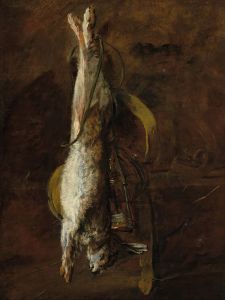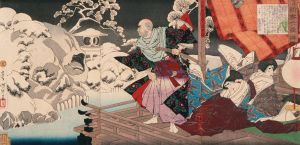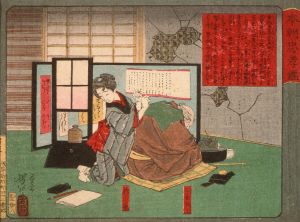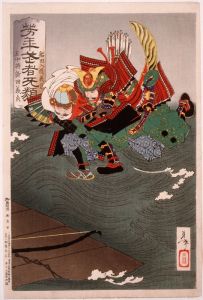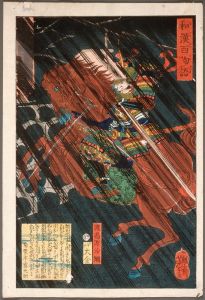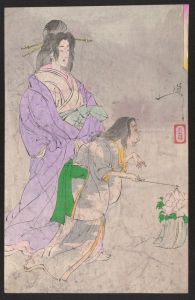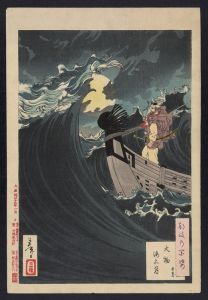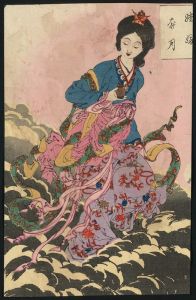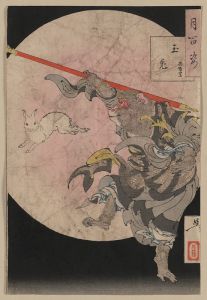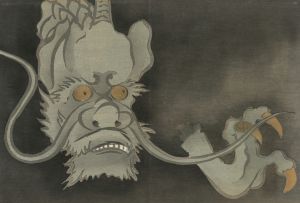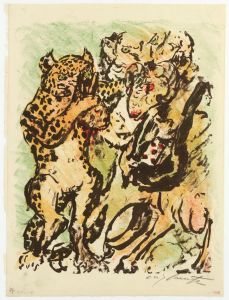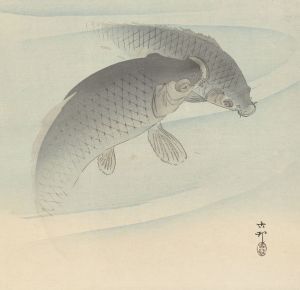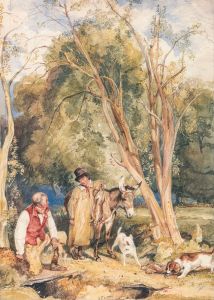
Tamausagi songokū
A hand-painted replica of Tsukioka Yoshitoshi’s masterpiece Tamausagi songokū, meticulously crafted by professional artists to capture the true essence of the original. Each piece is created with museum-quality canvas and rare mineral pigments, carefully painted by experienced artists with delicate brushstrokes and rich, layered colors to perfectly recreate the texture of the original artwork. Unlike machine-printed reproductions, this hand-painted version brings the painting to life, infused with the artist’s emotions and skill in every stroke. Whether for personal collection or home decoration, it instantly elevates the artistic atmosphere of any space.
Tsukioka Yoshitoshi (1839–1892) was a prominent Japanese artist known for his work in the ukiyo-e genre, a style of woodblock printing and painting that flourished in Japan from the 17th through the 19th centuries. Yoshitoshi is often celebrated for his innovative approach to traditional themes, his dynamic compositions, and his ability to capture the complexities of human emotion. One of his notable works is "Tamausagi songokū," which reflects his mastery in combining traditional Japanese folklore with his unique artistic vision.
"Tamausagi songokū" is part of Yoshitoshi's broader body of work that often drew inspiration from Japanese mythology, folklore, and historical events. The title itself suggests a connection to the legendary figure of Sun Wukong, or the Monkey King, from the Chinese classic "Journey to the West." This character, known for his mischievous nature and supernatural abilities, became a popular subject in various East Asian cultures, including Japan. Yoshitoshi's interpretation likely incorporates elements of this well-known narrative, though specific details about the piece are limited.
Yoshitoshi's career spanned a period of significant change in Japan, as the country transitioned from the Edo period to the Meiji era. This was a time of rapid modernization and Western influence, which affected many aspects of Japanese culture, including art. Despite these changes, Yoshitoshi remained committed to the ukiyo-e tradition, while also experimenting with new techniques and themes that reflected the evolving cultural landscape.
Throughout his career, Yoshitoshi was known for his ability to convey intense emotions and dramatic scenes. His works often featured bold lines, vibrant colors, and intricate details, which helped to bring his subjects to life. In "Tamausagi songokū," these characteristics would likely be evident, showcasing his skill in capturing the dynamic and fantastical elements of the story.
Yoshitoshi's influence extended beyond his own time, as he played a crucial role in the revival of the ukiyo-e tradition during a period when it was in decline. His dedication to the craft and his innovative spirit inspired future generations of artists, both in Japan and abroad. Today, his works are highly regarded for their artistic merit and historical significance, and they continue to be studied and appreciated by art enthusiasts and scholars alike.
While specific details about "Tamausagi songokū" are scarce, it is clear that Yoshitoshi's work in general reflects a deep engagement with the cultural and artistic currents of his time. His ability to blend traditional themes with contemporary influences has left a lasting legacy in the world of Japanese art. As with many of his pieces, "Tamausagi songokū" would exemplify his unique approach to storytelling through visual art, capturing the imagination of viewers with its compelling depiction of mythological themes.





